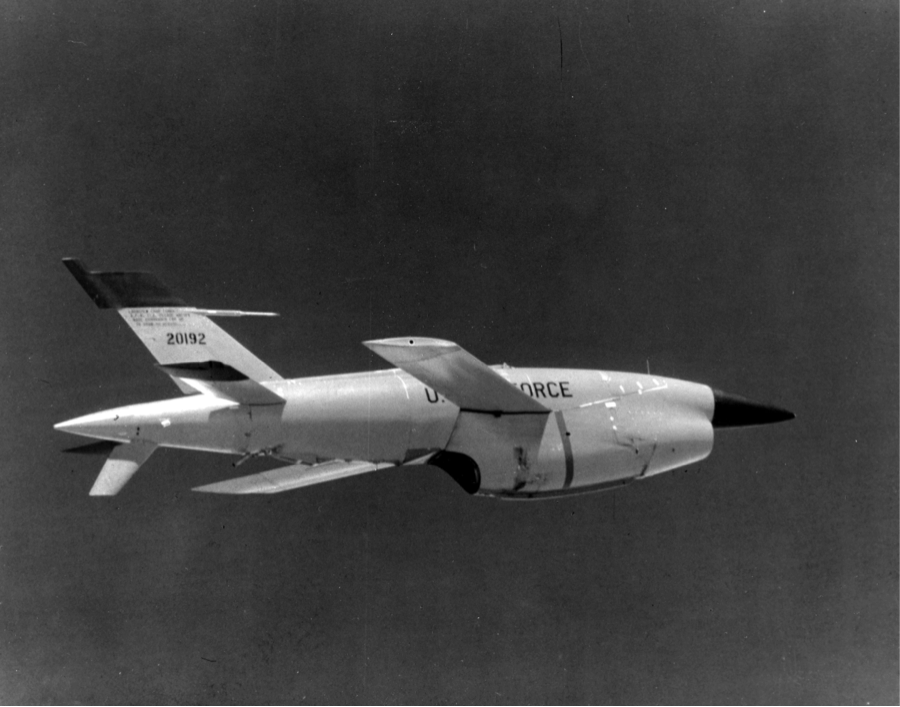The Ryan Firebee began as a series of target drones or unmanned aerial vehicles developed by the Ryan Aeronautical Company, beginning in 1951 (later Teledyne Ryan). It was one of the first jet-propelled drones, and one of the most successful and widely used target drones ever built, generally referred to as the Firebee I.
Initial versions were of high subsonic speed, and were intended for use in ground-to-air and air-to-air gunnery. Later versions were used as reconnaissance vehicles, as well as in attack and multi-mission roles. More than 6,500 Firebee I vehicles were built, with many variants introduced.
Initial models (Model Q-2/KDA) featured swept flight surfaces and a circular nose inlet. A substantially improved second generation Firebee, the AQM/BQM/MQM/BGM-34, first flew in 1958 and went into production in 1960. It became the dominant variant, featuring a larger airframe, longer wings, and a chin type inlet under a pointed nose. Additionally, a supersonic version, generally known as Firebee II (BGM-34E/F/T), was contracted for in 1965. Less than 300 of the supersonic variant were built, and is no longer in active service.

Now over fifty years in active service, the subsonic Firebee I has proven remarkably successful, and is still in operation with the U.S. Navy and Air Force, as well as allied nation armed and self-defense forces. It is one the longest-lived aircraft in the U.S. military inventory.
Link the the collection's Descriptive Finding Guide.
2001 Pan American Plaza, San Diego, CA
Phone: 619.234.8291
Información En Español
Contact Us
We would like to thank all our sponsors who help us make a difference. Click here to view all who help us.

The San Diego Air & Space Museum is a 501(c)(3) non-profit organization. Federal Tax ID Number 95-2253027.
